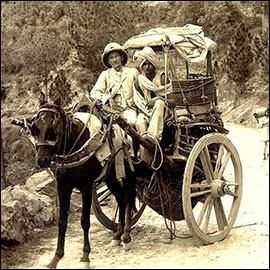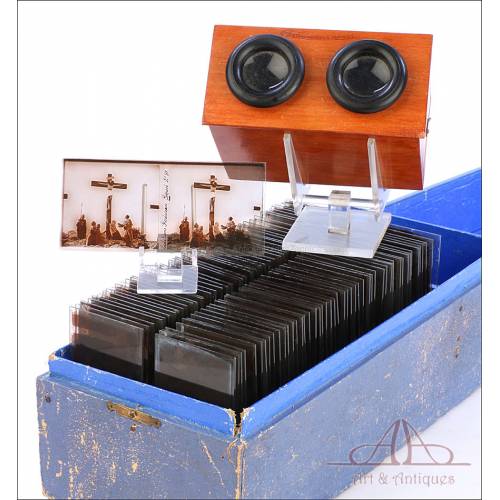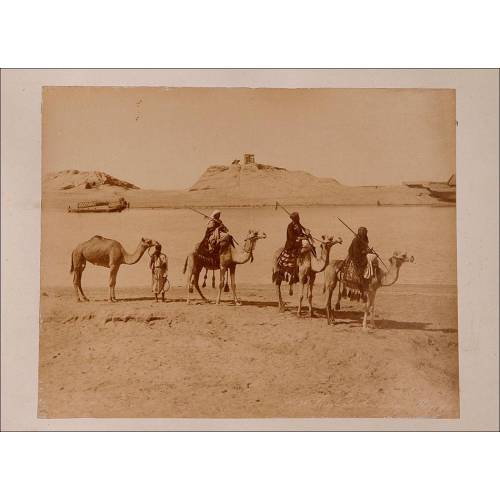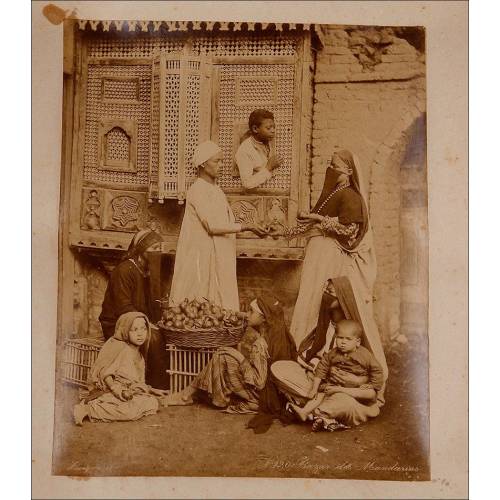Antique Photographs
Old photographs arouse a fascination only matched by the first films, shot by the pioneers of cinema. The discovery of photographic techniques can be described as a huge breakthrough, both for history (for its ability to immortalize historical moments) and for art and society. From the first photograms, printed directly on emulsioned supports, ...
Old photographs arouse a fascination only matched by the first films, shot by the pioneers of cinema. The discovery of photographic techniques can be described as a huge breakthrough, both for history (for its ability to immortalize historical moments) and for art and society. From the first photograms, printed directly on emulsioned supports, to the digital photographs that we save on our cell phones, old photos have evolved at incredible speed from their origins to the present day.
History of photography
The first ancient photographs were actually photograms printed on leather sheets. To make them, an object (a leaf, an insect, etc.) was placed on the emulsified support and exposed to light, achieving a life-size printed silhouette. However, the true origins of photography were established in 1938, when Louis Daguerre succeeded in printing images of scenes on emulsified silver-plated copper or polished silver surfaces. At the same time, the discovery of stereoscopic vision by Sir Charles Wheatstone initiated the development of stereoscopic photography. Following the printing process begun by Daguerre, in 1851 Sir David Brewster perfected and marketed cameras that generated stereoscopic plates on glass. Stereoscopes were used to visualize them in three dimensions. Meanwhile, in 1841 William Fox Talbot invented the calotype, which is considered the precursor of modern positive-negative photography.
During the second half of the 19th century, photographs and copies on albuminated paper predominated; the first photographs with added color were made by James Clerk Maxwell in 1861. At the end of the 19th century the first photographic film appeared, marketed by Kodak; about 30 years later the first slides were launched on the market. The 1940s saw the splendor of photojournalism, war photography and artistic photography. In a few years the Polaroid, a camera that photographs and develops images at the same time, was also launched. During the second half of the 20th century, photographic processes continued to evolve until the arrival of digital photography, a true revolution that completely transformed the field of modern photography.
Types of old photographs
Within the old photos that we can find for sale, there are different types of great interest to the collector. We can highlight the following:
Dagerotypes . Black-and-white images printed on emulsioned metal, made during the first half of the 19th century. The emulsion was an alloy of mercury and silver, exposed to iodine vapors to make it photosensitive. After exposure to light, the image was subsequently developed with mercury vapors.
Ferrotype . Photographic process invented by Adolphe-Alexandre Martin in 1853, which consists of making a positive image on a sheet of blackened metal with a collodion emulsion.
Ambrotypes . Ambrotypes are early photographs on glass plates, which like ferrotypes carried collodion emulsion. They were very popular in the mid-19th century.
Calotype . Calotypes are the true predecessors of modern photographs. They were made on emulsioned paper that gave rise to a negative image. From the first image, countless copies could be made. The economic cost was much lower, since instead of metal the support was paper.
Photos to albumen . These photographs were printed on albumin paper (with a photosensitive emulsion based on egg white). This technique resulted in photographs of great quality and detail that were developed by gold printing. Designed by Blanquart Edvard in 1850, this type of paper was the most popular photographic support for making prints between the 1960s and 1990s.
Collecting old photographs is a hobby that has more and more followers. The indefinable charm of these objects and their ability to retain in time fleeting moments makes them pieces of enormous evocative power.
Collection of Stereoscopic Photographs about Jesus of Nazareth. France, 1920s Collection of Stereoscopic...
Amazing collection of stereoscopic photos with the history of Jesus of Nazareth. Storing case and viewer. Fully original from the time. Amazing collection of stereoscopic...
Sold8 Albumen Photographs by the Zangaki brothers. Egypt, Circa 1880 8 Albumen Photographs by the...
Collection of eight albumen photographic prints with scenes of the Suez Canal. Original album. Collection of eight albumen...
450,00 € 650,00 €Set of 18 Albumen Photographs in Original Album. Egypt, 1899 Set of 18 Albumen Photographs in...
Set of albumen photographic prints with scenes of Egypt. Zangaki Brothers. Set of albumen photographic prints...
650,00 € 1 300,00 €
New products
-

Antique ivory and silver plated stethoscope, late 19th century
Antique stethoscope from the late 19th century in silver-plated metal...
-

Vintage pendant with shell cameo of Jesús del Gran Poder, carved c. 1970
Vintage pendant with a shell-carved cameo of Jesus del Gran Poder, circa...
-

Antique Roman Style Gilded Silver Chalice with Paten. France, 1932
Antique Roman-style chalice in gilded silver with paten. France, 1932....
-

Beautiful Antique 18 K Gold Ring with 7 Natural Diamonds
Antique 18K gold ring with 7 natural diamonds. Delicate openwork design,...
-

Antique Silver Reliquary. José Vilaplana. Valencia, Spain. Circa 1920
Impressive repoussé silver reliquary by José Vilaplana, Valencia, c....
-

Vintage 18K Gold Ring with 7 Natural Diamonds
Vintage 18K gold ring with seven natural diamonds in floral setting....
-

Antique Silver Chalice. Enameled Crosses. Valencia, Spain, 1942
Spanish chalice from 1942 in solid silver, gifted by the Church of...
-

Antique Silver Chalice and Paten. Granada Spain, circa 1900
Spanish chalice in white silver with matching paten, handcrafted....
Specials
-

Antique Walking Stick. Gold and Silver Damascened Handle. Circa 1900
Antique Collectors Walking Stick with...







